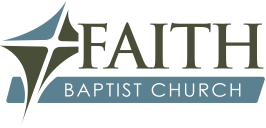Exodus 28 introduces the special attire to be worn by Aaron and his direct descendants as priests. God instructed Moses to gather Aaron and his four sons, Nadab, Abihu, Eleazar, and Ithamar, and to begin the process of preparing them for priestly service. The skilled men who would make so much of what would comprise the tabernacle itself would next make special clothes to be worn by the priests. These craftsmen were chosen by God for this task and endowed with special skills that enabled them to make these articles precisely as God directed. The priestly garments would include a breastplate, an ephod, a robe, a tunic, a turban, and a sash. God further instructed these items to be made of gold, blue, purple, and scarlet yarn, and with the fine linen mentioned in chapter 27. The ephod was a sleeveless vest worn close to the body that probably extended to just below the hips. The materials that comprised the ephods were expensive but reflected the dignity of the office. The ephod included two shoulder pieces fastened by clasps. The ephod would include a girdle, or waistband, also made with gold, blue, purple, and scarlet yarn and with finely twisted linen. Moses was to take two onyx stones and engrave on them the tribal names of the people of Israel by the order of their birth. They would next mount the stones on the shoulder pieces of the ephod. In this sense, Aaron would bear the names on his shoulders as a testimony before the Lord that Aaron represented the tribes before God. The skilled craftsmen would next make golden ornamental pieces that could be buttons or sockets, of sorts, fastened to the ephod, upon which were placed two chains of twisted gold wire. The Hebrew word for breastplate means “ornament,” and this distinctive item probably stood out from the rest of the priest’s attire. A skilled craftsman would construct this item made of the same material as the ephod. He was to make it square and folded over double, possibly to form a bag of sorts to hold the urim and thummim. Upon the breastplate would go four settings of expensive stones. The first row included ruby, topaz, and beryl. The second had turquoise, sapphire, and emerald. The third row contained jacinth, agate, and amethyst. The final row would have chrysolite, onyx, and jasper. The stones numbered twelve in all, with each bearing the name of a tribe of Israel. The breastplate would also contain chains made from pure gold fastened to the breastplate by rings. A blue ribbon was to pass through both lower rings to connect it to the waistband in order to fasten it securely to the ephod. The priests would wear these at all times while performing priestly service. Those who went with me to Israel this last time saw this garment completely made for the new Temple and ready for use. It was a fascinating lecture by the Temple Institute. Often lost in all this detail is the truth that God wants things done a certain way, and He is a God of details and excellence. We often want the comfortable, convenient way, but God wants things done His way.
Personal Prayer Requests:
- Lord, please help me to never be content with good enough, but to always pursue excellence in all that I do.
- Lord, please help me to study the detail in which you want things done and never settle for taking short cuts for convenience or comfort.
- Lord, thank you for never missing a detail. Whether it is creation, our bodies, or the affairs of man, you never miss any details.

